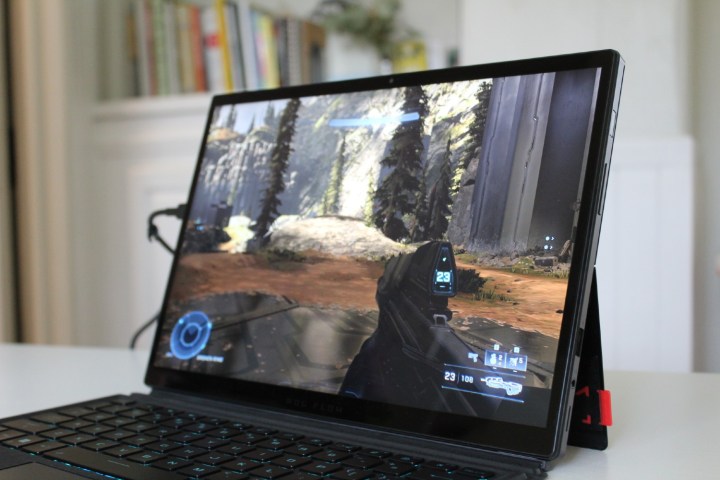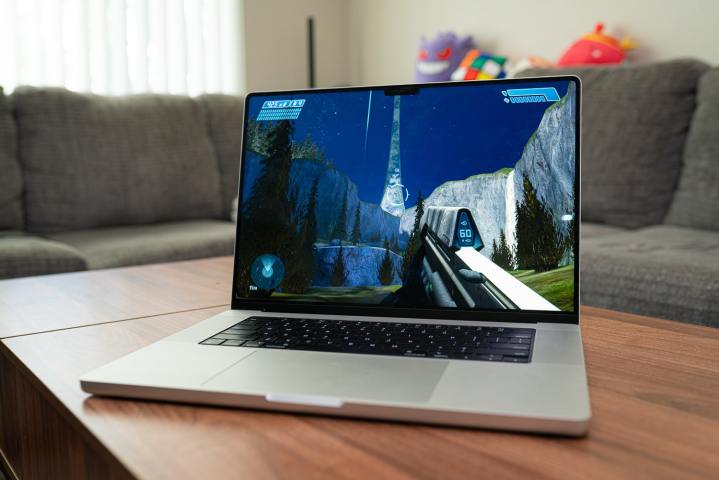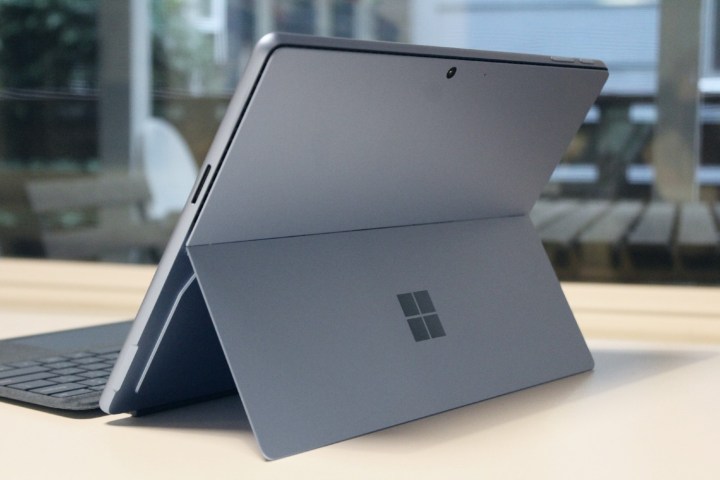I know, I know. It sounds ridiculous. Preposterous. Antithetical.
Apple surely won’t be releasing a gaming laptop, and current Qualcomm-based Windows laptops aren’t known for their performance.
However, after gaming on a MacBook Pro, I can’t help but imagine the potential of ARM-based gaming laptops and the current frustrations with technology. It may be a few years away, but one can dream, can’t they?
The challenges with gaming laptops

Gaming laptops have made significant advancements in recent years. Spearheaded by options like the Razer Blade, a new category of gaming laptops has emerged – compact, premium, and powerful. Take the ROG Zephyrus G14, for instance. With an OLED screen, all-aluminum build, and impressive performance despite its compact size compared to a MacBook Pro, it’s truly remarkable. This trend is not limited to one model but is being adopted across the board.
Despite the excellence of these laptops, they face inherent challenges when compared to other types. From my perspective, three major issues stand out: heat, fan noise, and battery life. As gaming laptops have become thinner and more compact, surface temperatures have risen, leading to discomfort and frustration. While external keyboards can be used, it defeats the purpose of having a laptop. One innovative solution is seen in the design of the ROG Flow Z13, a 2-in-1 similar to the Surface Pro, with the computer components located behind the display, avoiding the heat issues common in traditional clamshell laptops.

However, fan noise and poor battery life remain persistent issues in these designs. While ARM laptops excel in battery performance, gaming laptops struggle due to the power consumption of x86 processors. The silent operation of a fanless laptop like the MacBook Air, while not achieving high performance, provides a gaming experience free from distractions like loud fan noise.
These problems cannot be fully addressed with current technology, requiring a major leap in efficiency, possibly through the adoption of ARM processors. But is such a transition feasible?
Realizing the dream

In 2021, there were talks about the possibility of ARM gaming PCs. MediaTek, a major ARM chip buyer, hinted at a collaboration with Nvidia to bring GPUs to the ARM PC platform for gaming and content creation. However, developments have been slow, with no ARM laptops featuring discrete GPUs released so far. On the contrary, Apple has advanced its ARM MacBooks significantly, offering impressive GPU performance for gaming.

Qualcomm’s Snapdragon X Elite chip promises a significant performance boost for ARM Windows laptops, potentially revolutionizing the market. AMD and Nvidia are also reportedly working on ARM systems, with possible releases in 2025. This shift towards ARM processors could lead to substantial advancements in PC technology, challenging the dominance of traditional x86 processors.
While the transition to ARM gaming laptops is promising, it will require significant effort to overcome software compatibility issues and developer support. Intel remains unconvinced of the threat posed by ARM laptops, but the momentum towards ARM adoption in the PC market is undeniable.
A promising future

While the road to ARM gaming laptops may be long and challenging, the potential benefits are worth pursuing. By 2025, we may witness the first true ARM gaming laptops, offering solutions to current hardware limitations and enhancing the gaming experience overall.
Editors’ Recommendations


